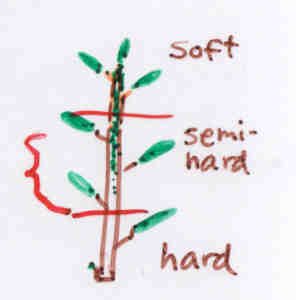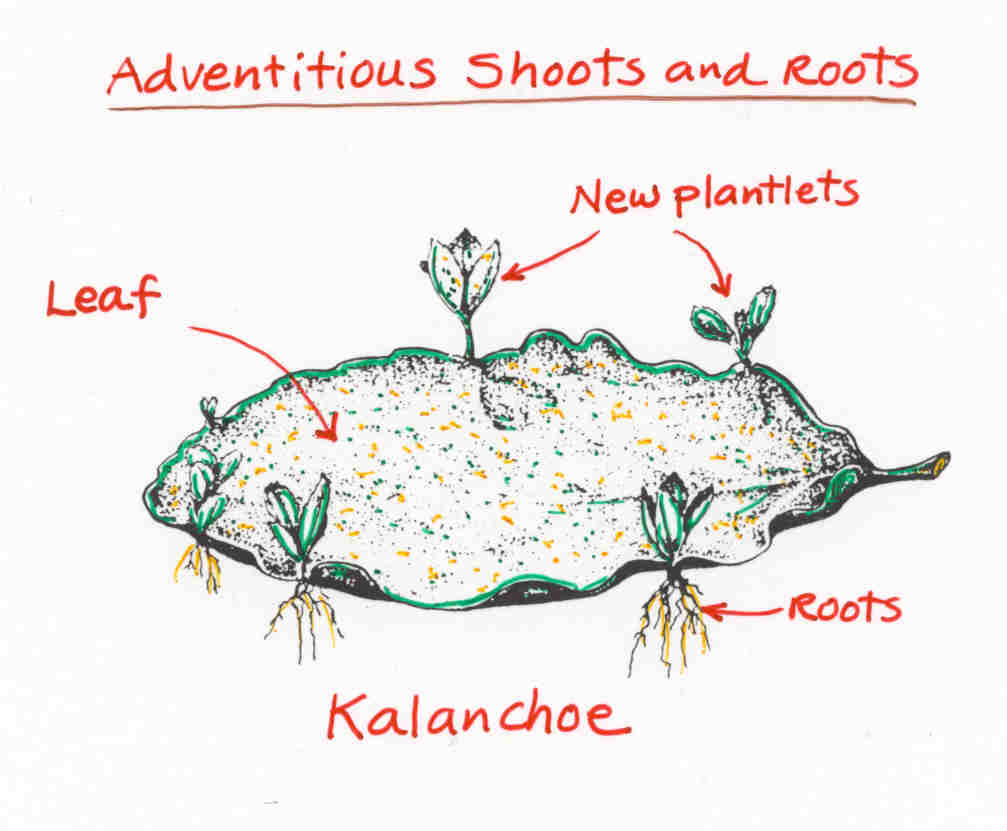I. THREE METHODS OF PLANT PROPAGATION
a. Sexual Propagation - propagation by seedsII. SEED PROPAGATION
Plants are propagated by seeds formed through pollination and fertilization
b. Asexual Propagation - propagation by vegetative plant parts
Plants are propagated by division, cuttings, grafting, layering, and underground organs such as bulbs, rhizomes, and corms
c. Micropropagation - A form of asexual propagtion
Small pieces of plant tissue are grown into new plants using a combination of growth hormones and augar in a sterilized container
a. Seed Production
1. Location...........Western States (California, Idaho, Washingtion)
Low humidity (less fungal infections, bacterial diseases)
Mild temp (for flowering and seed set)
Isolated areas (to guarantee maintenance of pure-line seeds:
2. Hybrid seed production
-hybrids are a cross between two different varieties
In the US -Use of male sterility genes to ensure there is no pollination from the same variety
In developing countries-Hand pollination
3. Labor intensive
-much labor is needed for harvesting, cleaning, and handling of the seedsb. Seed Strorage
1. Optimum condition
- Low temperature (0-35° F)
- Low humidity (4-6 % Relitive Humidity)
2. Practical conditions
- 32-50° F (0-10° C) and 50-60% RH
3. Longevity varies by species
- Anual flowers 1-2 years
- Lotus > 1000 years
4. Cryogenic storage (-196° C)......... Permanentc. Seed Germination
1. Viability ( percent germination)
-Determined by percent germination
-Tetrazolium test to check tissue viability (T2T or TTC -two forms of tetrazolium)
-Seed priming is done for vigorous, uniform germination
(seed priming- uses water imbibition to prepare seeds for germination without allowing for radicle emergence
- the seed are then dried again until planting)
2. Breaking Seed Dormancy
- Scarification- methods used to overcome physical dormancy ( physical dormancy- seed coat is impermeable to water and gases)
a. mechanical abrasive method*
b. hot water (170-212° F)
c. Sulfuric acid (concentrated) 1-5 hours
- Stratification method used to remove physiological dormancy (physiological dormancy- dormancy due to inhibitors within the seed)
a. Cold Stratification
-seed is stored at 32° F for 6-8 weeks with both moisture and aeration
-most popular method for woody plant seeds
b. Warm Stratification
-seed is stored at warm temperature (>45° F) with moisture
-required for some species (Viburnum, redbud)
3. Embryo Culture (Embyo Rescue)
Immature zygotic embyos are taken out of ovary and cultured in vitro-----> viable seeds cam be obtained
-used in abortive interspecific crosses (potatoes)- Tuckey's medium
-embryos lacking endosperm (orchids)- Knudson's medium
d. Planting -
1. Direct Seeding
-use of pelletized seeds
-fluid drilling
2. Transplanting
-Mechanical transplanting
* lettuce, cabbage, cellery in Californiae. Germination
III. VEGETATIVE PROPAGATION METHODS -- (Asexual)
1.
Apomictic seed - seed formed with out
pollination
2. Use
of specialized vegetative structures- cuttings
3. Advetitious
roots and shoots -shoots and roots formed where they normally would
not form
4. Grafting
-
graft top of desired plant on a hardier rootstock.
a.
Use of Apomictic Seeds
Apomixis-
development of seeds without fertilization - seeds are formed by
megaspore mother cells and so are genetically the same as maternal parent
Examples: Mango, Kentucky Bluegrass, Citrus
b. Use of Specialized
Vegetative Structures
1. Runners- stolons fo strawberry, strawberry Geranium
2. Bulbs- Onion, tulip, Easter lily, Hyacinth
3. Corms- Gladiolus, crocus cormel- small corms
4. Rhizomes- Iris, turfgrass, lily-of-the-valley, orchid
5. Off-shoots- pineapple (slip), Dendrobium, Cymbidium, daylily
6. Stem tubers- potato (eyes)

7. Tuberous
roots- sweet potato, dahlia, tuberous begonia
8. Root
suckers- Raspberry
c. Induction
of Adventitious Shoots and Roots
1. Layering- Regenerated vegetative parts attached
to the plant
Kinds- tip, simple, trench, serpentine, mound, air
2. Cutting propagation- Detached stems and roots are rooted or shoot-generated
-Stem cuttings-Hardwood (Rose, apple) Softwood (Peach) Semi-hardwood (most plants)
-Root cuttings- Rose, sumac, lilac
- root cuttings will have a problem with phenotype conversion in chimeric plants.
3. Origins of Adventitious Shoots and Buds
Adventitious buds (roots)- arising from any plant part other than root or shoot primordia (Apex, axillary bds, on nodes)
- generally occurs form secondary meristematic tissues (on internodal area, leaf edges)

4. Rooting stimulation
- use of rooting hormones (IBA, NAA--- Auxins)
IBA= Indolebutyric acid
- presence of light
- Temperature Gradient (cooler air, warmer soil)
IV. GRAFTING
- The joining
of plant parts by means of tissue regeneration
- Stock (provides
root) and scion (becomes stems and shoots)
- Compatibility
between stock and scion essential
(Graft incomatibility may be shown after 10-15 years)
- Alighnment of
cambium layers important
a. Kinds
1. Cleft graft
2. Whip-and-tounge graft
3. Side graft
4. Budding (T-bud, chip bud, patch bud, flute bud)
5. Inarching
6. Bridge graft
7. Topworking

V. MICROPROPAGATION (Tissue culture)
a.
Asexual Embryogenesis (Somatic)
In vitro induction
of somatic embyos which can be grown into plants
b. Rapid Shoot
Multiplication
Apical or axillary shoot meristems are cultured shoot proliferation is
fast:
(One explant can produce over one million plants in one year)
- about 120 species are commercially micropropagated
c.
Organogenesis
Shoot and root formation from callus tissue







